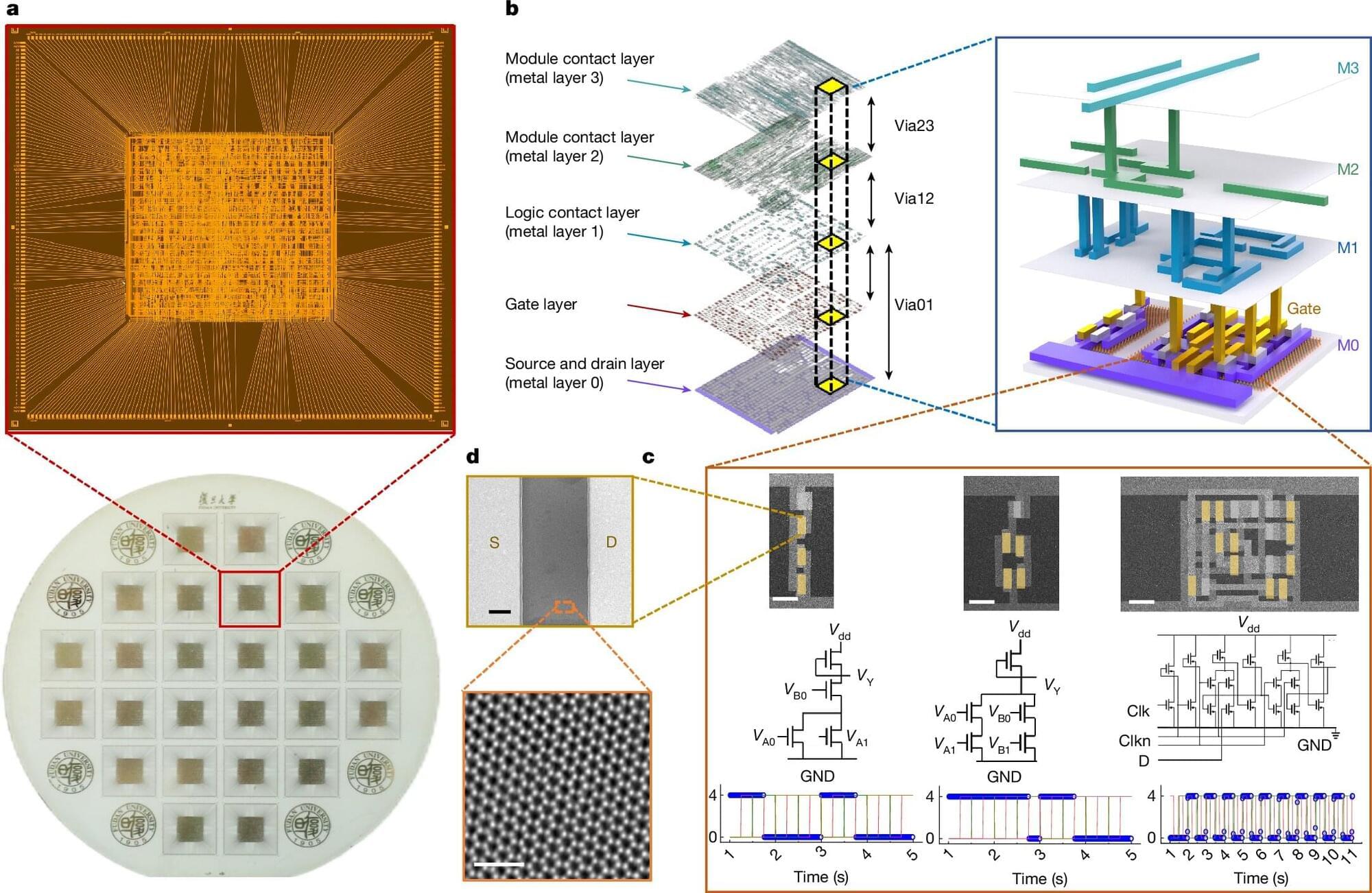A team of engineers at Fudan University has successfully designed, built and run a 32-bit RISC-V microprocessor that uses molybdenum disulfide instead of silicon as its semiconductor component. Their paper is published in the journal Nature.
Most microprocessors are made using the semiconductor silicon, which has worked out well for several decades. But as researchers attempt to make processors ever smaller, they have run into a dead end with silicon—they cannot make it any thinner. Instead, many researchers have turned to 2D materials such as graphene, but this is challenging because it is a conductor, not a semiconductor.
In this new study, the research team used a nearly 2D semiconducting material, single-molecule sheets of molybdenum disulfide. These sheets are not truly 2D because they bond at an angle, resulting in a slightly zigzag surface. To make a processor out of them, they put them on a sapphire substrate.
